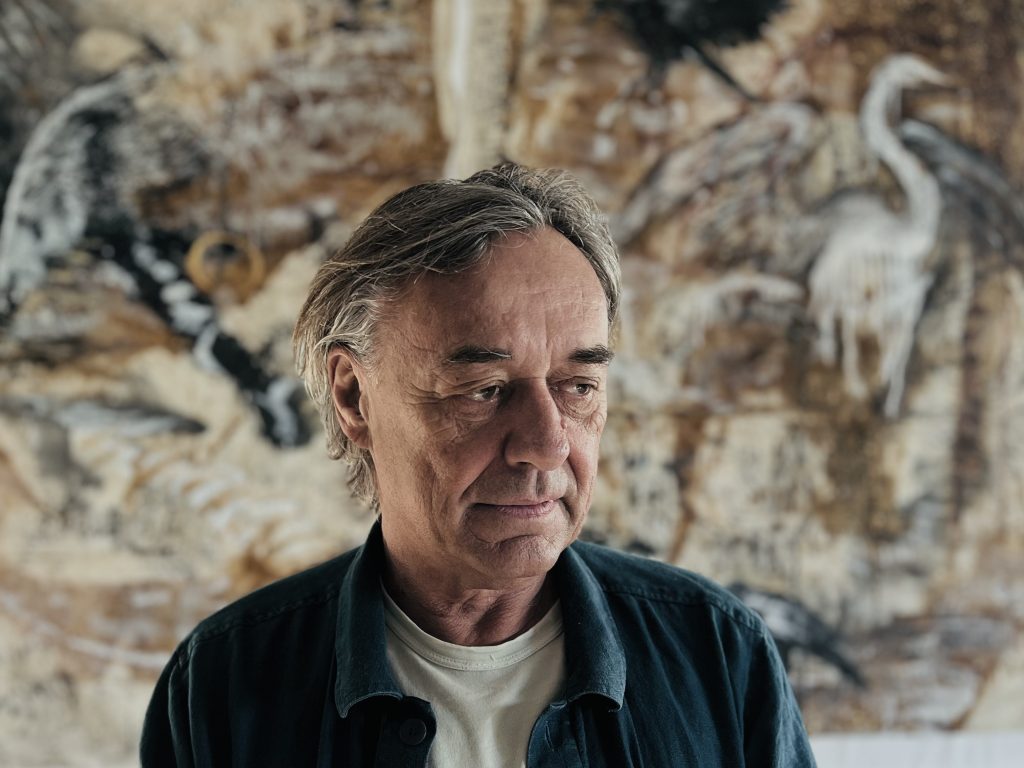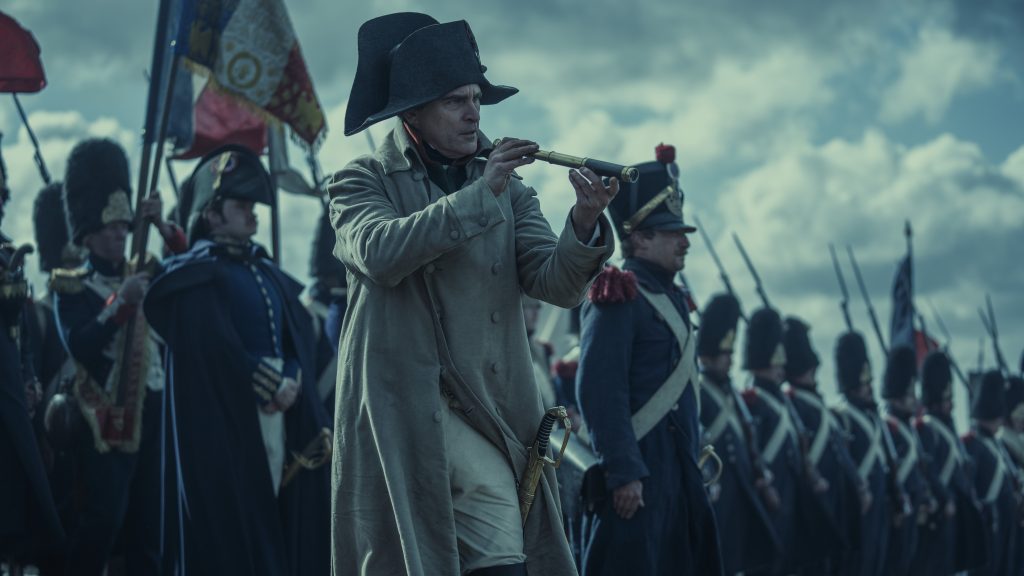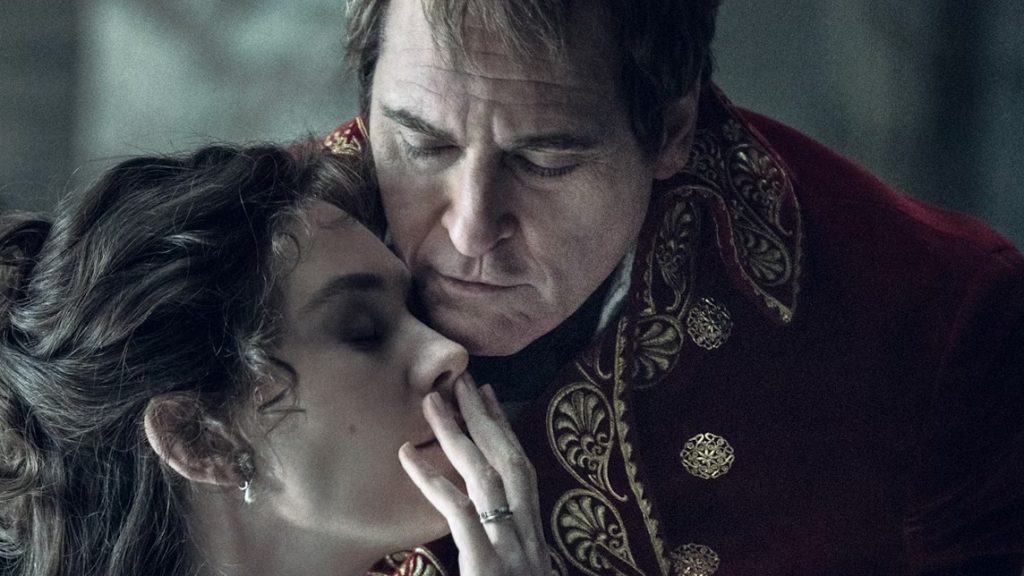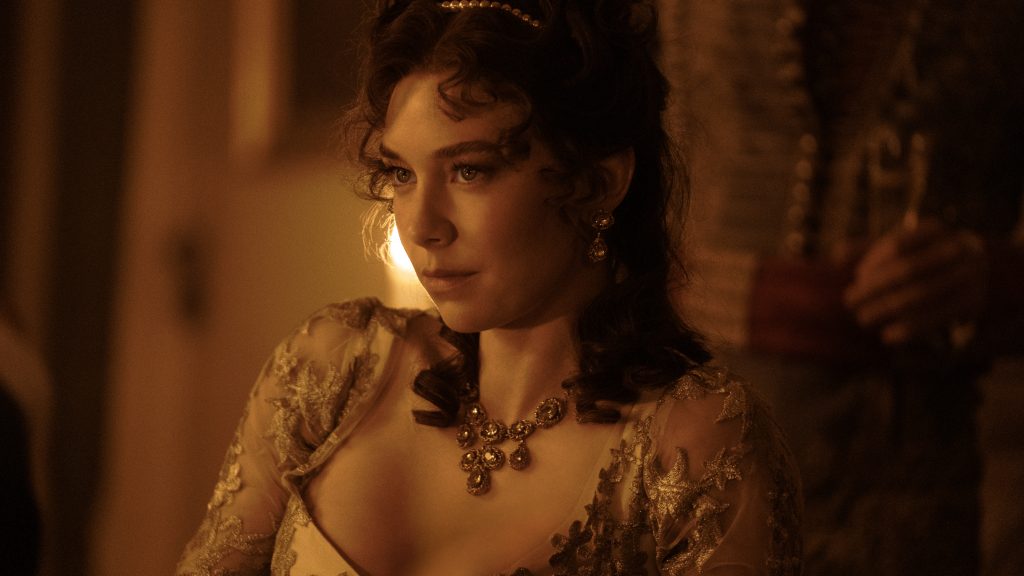
Ridley Scott‘s Napoleon combines large-scale epic action with intimate drama in telling the life of Emperor Napoleon Bonaparte. As portrayed by Joaquin Phoenix, Napoleon is a parvenu who bluffs his way into a role as a world leader. Vanessa Kirby plays Josephine, in David Scarpa‘s screenplay the only person who can stand up to the French leader.
Marked by sensational battle scenes and by equally involving domestic fights, Napoleon marks the latest collaboration between director Scott and cinematographer Dariusz Wolski ASC. The production used as many as 11 cameras at a time to capture battle scenes using up to 500 extras and 250 horses.
Starting with Prometheus in 2012, Wolski has worked on Scott films like The Martian and All the Money in the World. He received an Oscar nomination for the Paul Greengrass Western News of the World in 2020, and shot The Last Duel and House of Gucci the following year.
Wolski spoke with Below the Line at this year’s EnergaCAMERIMAGE in Toruń, Poland, where he screened Napoleon.
Below the Line: At your Q&A after Napoleon, you spoke about working with two cameras, three cameras, up to eleven cameras. So always multiple cameras?
Dariusz Wolski: Yes. And not just that. Quite often in this movie we used two Steadicams. We learned that on House of Gucci. When we were doing the fashion shows and runways, we had a Steadicam and two or three cameras behind the stage. The plan was to shoot everything simultaneously to help the actors. We had a dolly shot with the Tom Ford tech looking at the models. Ridley said, “It would be nice to have a second one.” So we had one in the back and one out front.
For Napoleon, the two Steadicams were super helpful. You have big groups of soldiers tracking this way, then with the second Steadicam you can lead somebody in a profile.
When you’re designing a battle scene, you’re putting as many cameras in as you can, not just to capture material but to keep it spontaneous. Also to protect the horses, who can’t keep running for take after take. Once we make the decision about where the cameras go, Ridley basically cuts the film while he is shooting. He has a mike, but there isn’t really time to tell the operators what to do because they’re already doing it. That’s where prep and experience pay off.
You can only work this way with someone like Ridley. I can suggest it to other directors, but most of them can’t comprehend watching four, five, six monitors at the same time. Essentially editing in your head. I’m not trying to diminish the work of directors like Steven Spielberg, who typically works with one camera. But for Scott, using multiple cameras obviously works best.
It’s a tricky movie from an action perspective because normally your hero is in the middle of the battles. Apart from the first battle and the last, Napoleon is more a strategist, an observer.

BTL: How much did you have to learn about military strategy before starting this?
Wolski: That was a steep learning curve. We had amazing experts helping us. One was ex-military, he does tons of TV movies and technically he knows everything about uniforms and such. And then we used a historian named Michael Broers [Professor of Western European History at the University of Oxford]. And Andrew Roberts, who wrote the best book about Napoleon [Napoleon the Great].
Working with Ridley, you do a lot of the prep yourself. So I met with the stunt guys, the horse wranglers, the armorers, the special effects team, the explosives experts, the military strategists.
BTL: Did you have an idea of a visual scheme? What was your approach to the subject before prep?
Wolski: Well, zero until you do the research. You come with an open canvas, you absorb whatever information you can, and based on that you begin to understand. Ridley is incredible that way because he asks the right questions. That’s how he can tell a complex story so clearly.
BTL: Watching this, I’m not sure if we’re supposed to admire Napoleon or hate him.
Wolski: That’s the whole point.
BTL: I kept thinking of Trump.
Wolski: A little bit. With his narcissism.
BTL: Also the lying, the disinformation. Like when he talks about the Russian campaign: “We’re winning this war.”
Wolski: Trump has never been in a war. He would be destroyed. The one thing about Napoleon, he actually did it. But I’m sure elements of the narcissistic personality were similar.
You have to understand why it’s so hard to write anything objective about Napoleon. Because when you talk to historians, they say that period is marked by disinformation. Napoleon was the king of propaganda. And the English were brilliant at it.
A lot of the “facts” about Napoleon were exaggerated or even manufactured to put him down. When it comes to Josephine’s letters, a lot of them disappeared after they were stolen. And those that were published, many were faked.

BTL: The scenes between Kirby and Phoenix are unbelievably tight and intimate. I’m wondering how you got to that point where they’re sitting on a couch together and she says, “You’re nothing without me.” You and Mr. Scott must have known how crucial that moment was.
Wolski: Most of the scenes between them are very static. We did that deliberately because the dynamics of the scenes change so much. Usually, we had a wide shot of them on the couch, and then two medium shots. And then closer for the big moments.
Earlier Napoleon was yelling at her, he’s very dynamic, moving around, restless. The point you’re talking about, they’re exhausted. They must have been fighting all night. It’s quite a simple shot.
BTL: But you’re capturing these powerful emotions.
Wolski: That’s good acting.
BTL: I guess I’m asking how you blocked it, how you got to that actual composition.
Wolski: What it is, they go through rehearsals talking. I’m far away in the corner, so all I hear is mumbling, whispering. It’s very quiet. They basically trying to figure out how to do it, “What do you want?” and things like that. Then they’re sitting, not doing anything. Ridley walks away, turns toward me, and says, “Okay, we do one here, one there.”
BTL: So it’s already lit.
Wolski: Yeah. I mean, the space is lit. Unless they start doing something else, which is when I’ll bring more lights in. But it’s pretty much like this: There’s a combination of a big window light and a bit of fire light. If it’s later in the day, the fire becomes more dominant. When it’s daylight, the fire is not there at all, or just minimal. At magic hour, there is a northern light from the window and the fire light. You’re basically trying to do it all the same, because it’s just two people sitting on a couch.
It was a little tricky on this film, because we were using real locations with 19th century tapestries and such. So we had severe limitations on whether we could use candles. It became a question of do we like the location that much to forgo the use of candles. Same thing with fireplaces.
In this movie, I’d say 60% of the candles are real, especially those around the actors, where the light interaction is important. A lot of the background we had to create with LED monofilaments on dimmers.
BTL: I’m trying to figure out what makes that scene so powerful emotionally. You must have had two cameras to cover them both.
Wolski: That was probably four cameras.
BTL: And Mr. Scott is there telling them to do this or that.
Wolski: At this stage, you don’t even do that. They’re loaded. You just let them do it, you know? It’s not like an amateur hour where you ask, “Can you be more tragic?” We’re working on a different level. These are major actors, a major director. They’ve all read the script, they all understand what’s going on. They have been talking as the movie evolves.

BTL: Are there a lot of takes?
Wolski: No, no. Ridley doesn’t do a lot of takes. If Joaquin is looking for something, you let him do it.
BTL: What about when he is attacked in the assembly room? They announce that there will be three consuls, and the members of the Directory attack him.
Wolski: He wiped out for real in that scene. When he was running down the stairs, that wasn’t a stunt. He really fell.
BTL: There’s an intense close-up of Phoenix pushing his way past the other members.
Wolski: So you tell the operators, he’s going to come and they’re going to mob him. You have three cameras, one is going all the way in, and there you have it.
BTL: You can’t plan that kind of action, can you?
Wolski: You’re planning enough, but you don’t put down marks. And you can’t do it over and over. When Joaquin fell, the camera was a little late because he was running with a Steadicam. Ridley said, “Well, this is it.” You just have to let go. Maybe if you try again you can get him to fall perfectly, but it’s not going to be real then, you know?
There’s a classic example in The Martian. Donald Glover plays a scientist who comes up with an idea of how to send the ship back to Mars. He’s so nervous at one point, he walks up and drops a cup of coffee. Okay. Cut. It’s in the movie. You include a shot like that because it’s so important to be real. It becomes more alive.
Napoleon is now playing in theaters.





